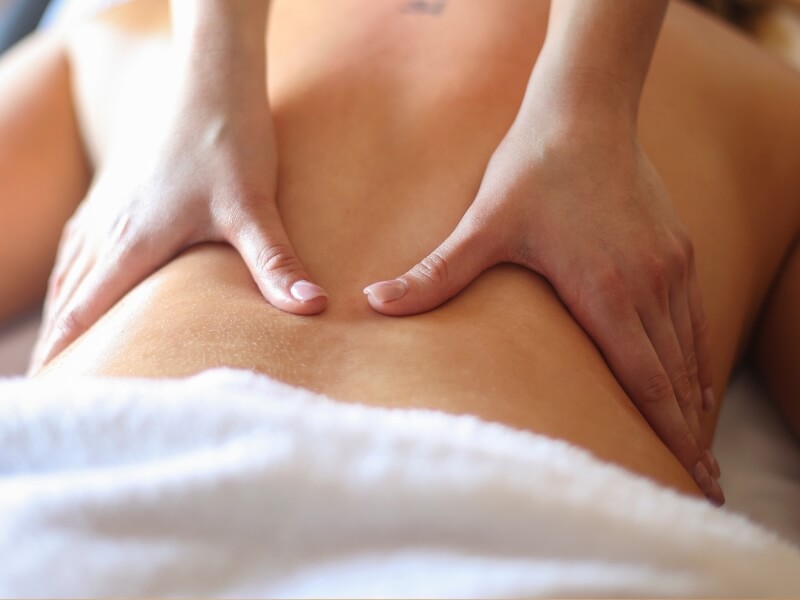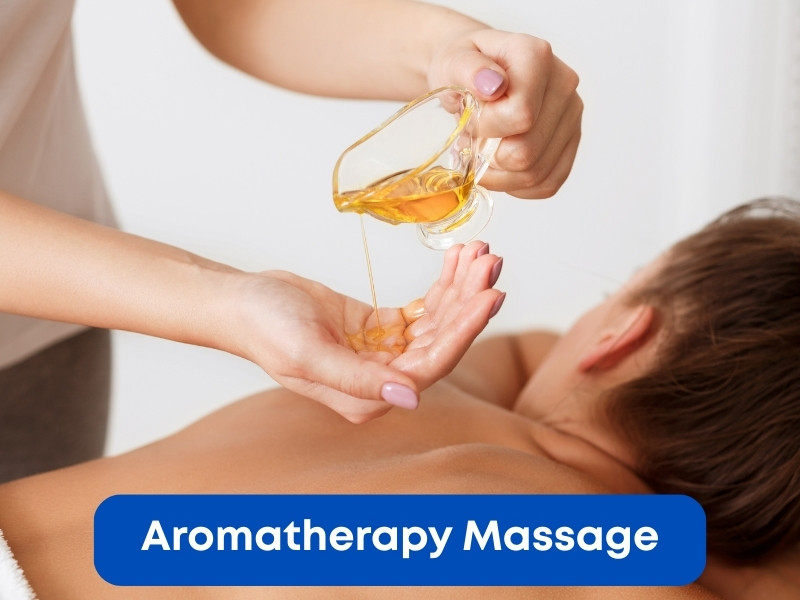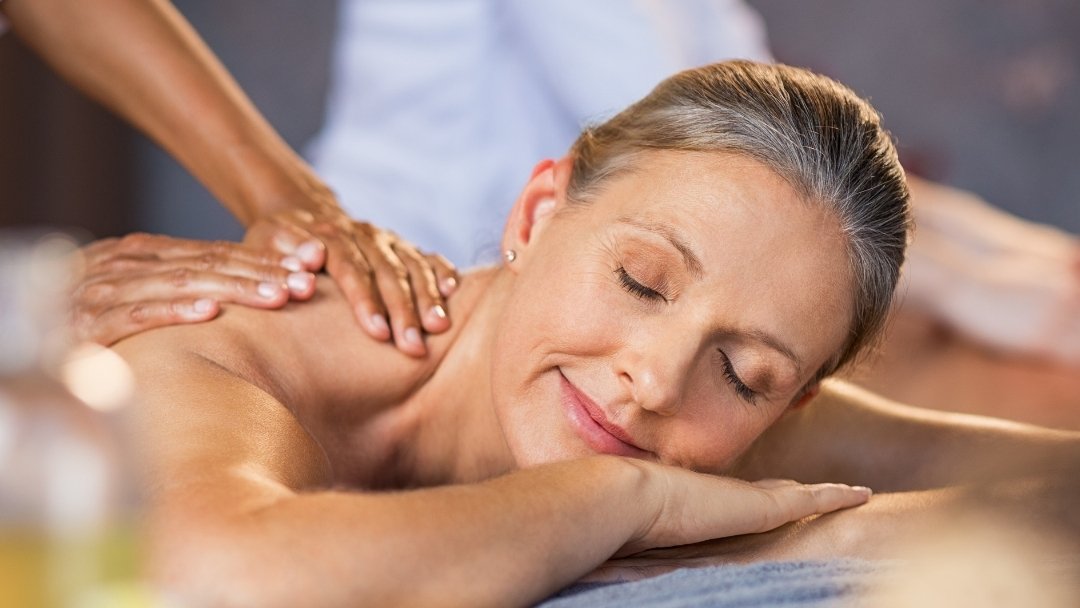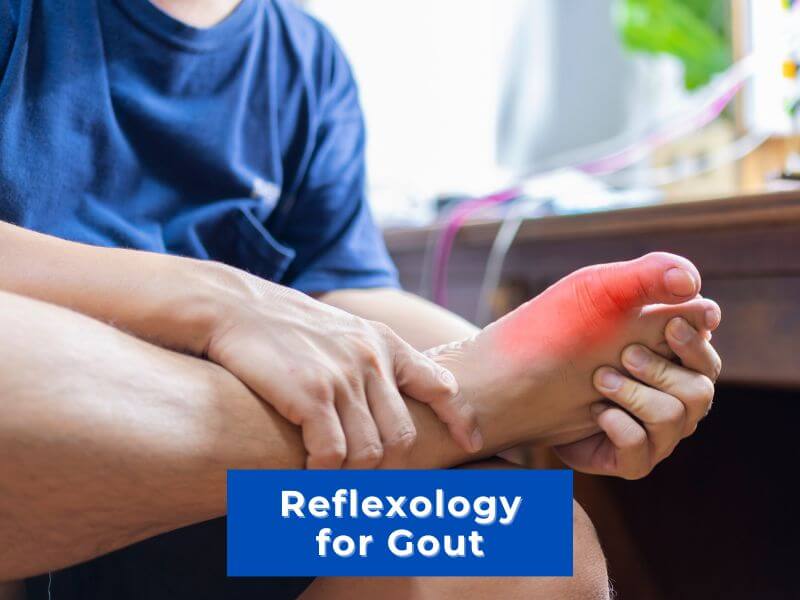Living with osteoporosis can be challenging, with constant worries about maintaining well-being and finding relief from pain. But what if there was a gentle way to help? Consider the soothing approach of massage for osteoporosis. It’s more than just a way to relax; it’s a proven method to help strengthen bones and ease discomfort. This guide helps you understand why massage should be part of your journey to feeling better. Let’s look into how this simple yet effective therapy can make a real difference in managing osteoporosis.
Contents
What is Osteoporosis?
Osteoporosis might sound complicated, but it’s essentially a condition where, over time, your bones become fragile and more prone to breaks from a minor bump or fall. Consider your bones as the framework of a building, solid and supportive. Now, imagine osteoporosis as a gradual thinning of the walls, making them less sturdy and more vulnerable to damage. Because it’s a condition that quietly undermines the bone’s strength, often unnoticed until a sudden break or fracture occurs; it’s sometimes called the silent thief.
Causes and Risk Factors of Osteoporosis
It is estimated that osteoporosis affects over three million people in the UK. Every year, more than 500,000 people require hospital treatment for fractures as a result of osteoporosis.
Understanding why some people get osteoporosis is like piecing together a puzzle with many different pieces. It’s a condition where bones lose their strength and become more fragile, making them more likely to break. This natural thinning of the bones happens as we age, but for some, it occurs more rapidly and severely. So, what tips the scales for some people more than others?
Age and Hormonal Changes
As we all age, our bones gradually lose their density. This is a normal part of ageing, but after the age of 35, the process accelerates for some, leading to osteoporosis. For women, the menopause is a significant turning point because of the drop in oestrogen, a hormone crucial for bone strength. Early menopause or hysterectomy can further increase this risk. Men aren’t immune either; low levels of testosterone in older age can also lead to weakened bones (NHS Inform, n.d.; NHS UK, n.d.).
Lifestyle Factors
Our daily choices play a significant role too. A diet without sufficient calcium and vitamin D, not enough exercise, smoking, and drinking too much alcohol can all contribute to weaker bones.
Medical Conditions and Treatments
Certain medical conditions and treatments can make you more prone to osteoporosis. Long-term use of high-dose oral corticosteroids is known to affect bone density. Other conditions like rheumatoid arthritis, coeliac disease, and hormone-related disorders can also have an impact.
Genetic Factors
Your family history plays a part too. If your parents had osteoporosis or a history of fractures, your own risk might be higher.
Symptoms and Diagnosis
Most people don’t even realise that they have osteoporosis until they experience a fracture or break a bone. Early warning signs can include a stooped posture, loss of height over time, or sudden, unexpected fractures. Common fractures resulting from osteoporosis are usually in the hip, spine, ribs, wrist, and shoulder.
Doctors can diagnose the disease with X-rays or bone density scans, so getting checked is a good idea if you’re at risk.

How Massage Therapy Helps Osteoporosis
In the battle of managing osteoporosis, massage therapy emerges as a gentle ally. It’s a non-invasive treatment that helps soothe the body’s aches and pains whilst supporting your overall well-being. Massage therapy for osteoporosis offers a number of benefits including pain management, improving mobility, and enhancing overall quality of life. Here’s how it can make a difference:
Improving Muscle and Bone Health
- Muscle Support for Fragile Bones: Massage helps maintain and improve muscle tone and flexibility. Stronger muscles support fragile bones, reducing the risk of fractures. It’s about creating a supportive environment for your skeleton, ensuring muscles are in the best condition to support and protect.
- Stimulating Bone Strength: Improved circulation and stress reduction can contribute to overall bone health. Massage can be a valuable part of a comprehensive bone health strategy by ensuring nutrients are efficiently delivered to your bones and reducing inflammation. One study found that traditional massage could lead to increased bone formation. However, further studies are needed in this area.
Pain Management and Mobility
- Reducing Pain: For many with osteoporosis, pain is a constant companion, stemming from both the condition itself and related fractures. Massage therapy can significantly reduce pain by releasing endorphins, the body’s natural painkillers, and by relaxing muscle tension around affected areas.
- Enhancing Mobility: With reduced pain and increased muscle flexibility, mobility naturally improves. Regular massage can help individuals maintain a more active lifestyle, contributing to better posture, balance, and overall movement. This can be particularly beneficial in preventing falls, a common concern for osteoporosis patients.
Enhancing Quality of Life
- Mental and Emotional Benefits: Living with a chronic condition like osteoporosis can lead to stress, anxiety, and depression. Massage is well-known for reducing stress and promoting relaxation, offering a respite from the daily challenges of managing osteoporosis.
- Promoting Independence: By improving physical function and reducing pain, massage can help individuals maintain a higher level of independence. This can profoundly impact quality of life, allowing for continued engagement in social, recreational, and occupational activities.
Before proceeding with any massage therapy, consulting with your therapist is crucial. They are trained to adapt their methods to suit your needs safely and are aware of the precautions needed for osteoporosis patients. By working together, you can enjoy the benefits of massage without compromising your bone health.
Types of Massage for Osteoporosis Patients
| Type of Massage | Description |
|---|---|
| Swedish Massage | Known for its light and gentle strokes, Swedish massage is ideal for osteoporosis patients. Gently working on your muscles improves circulation and flexibility without putting undue pressure on fragile bones. |
| Myofascial Release | This technique involves stretching and releasing the connective tissues around your muscles. It’s perfect for addressing specific areas of tension or pain associated with osteoporosis. |
| Lymphatic Drainage Massage | This massage offers a gentle approach to reducing swelling and enhancing circulation, which benefits those with osteoporosis. By promoting relaxation and detoxification, it aids in managing the discomfort associated with the condition. |
| Aromatherapy Massage | Aromatherapy is a holistic healing treatment that uses natural plant extracts to promote health and well-being. By harnessing the pain-relieving properties of essential oils such as chamomile, lavender, and rosemary, aromatherapy can help alleviate the discomfort and muscle spasms often associated with this condition. |
| Reflexology | This gentle therapy aims to improve circulation, reduce stress, and promote overall well-being, which benefits individuals with osteoporosis. By stimulating reflex points on your feet, reflexology can help alleviate pain, enhance relaxation, and potentially improve bone health by encouraging better blood flow and nutrient distribution throughout the body. |
It’s important to avoid more intense massage types involving deep pressure or vigorous movements, such as sports or deep tissue massage, which might be too strenuous for fragile bones.
Selecting the right massage therapy for osteoporosis involves carefully considering safety and compatibility with your health needs. Consult with your doctor for approval and to understand how massage can fit into your existing treatment plan.
When seeking a massage therapist, prioritize those with experience in osteoporosis care, ensuring they have the necessary certifications and understanding of how to adjust their techniques for your safety. By taking these steps, you can integrate massage therapy effectively and safely into your osteoporosis management.

Preparing for a Massage for Osteoporosis Session
- Communicate Your Needs and Concerns: Be open and honest with your therapist about your condition, pain levels, and any areas of concern. The more they know about your situation, the more they can adapt the session to your needs.
- Understand the Process: Ask the therapist to explain what the session will involve, including which massage techniques they will use.
- Feedback During the Session: Don’t hesitate to provide feedback during the massage. If something feels uncomfortable or painful, let the therapist know immediately. A good therapist will adjust their technique accordingly.
By choosing the right therapist and actively participating in your treatment, you can enjoy the many benefits of massage safely and effectively. Ultimately, the goal is to improve your overall well-being and quality of life while managing the symptoms of osteoporosis. With the right approach, massage therapy can be a valuable and enjoyable part of your care plan.
Frequently Asked Questions
Here are some typical questions related to massage and osteoporosis:
Can everyone with osteoporosis have a massage? Most can, but always get approval from your doctor first.
How often should I get a massage? This will depend on your individual needs and circumstances. Your therapist can recommend a schedule that suits your needs.
Can massage improve bone density? Massage doesn’t directly increase bone density but can improve overall bone health by enhancing circulation and reducing stress.
How long will the massage treatment be? Usually, 30-minute sessions will be sufficient time to feel some benefits.
Massage therapy offers a soothing and therapeutic option for managing osteoporosis, complementing medical treatments and lifestyle changes. Rather than just alleviating symptoms; it’s about enhancing your quality of life, providing pain relief, and improving mobility and independence.
By understanding the types of massage suitable for osteoporosis and ensuring safety precautions, you can enjoy a more holistic and proactive approach to managing osteoporosis.
Remember, the journey with osteoporosis is unique for everyone, and incorporating massage as a regular part of your care can offer comfort, support, and a better way to navigate the challenges of this disease.
With each gentle stroke, massage therapy can help pave the way to a more comfortable and active life despite the challenges of osteoporosis.




